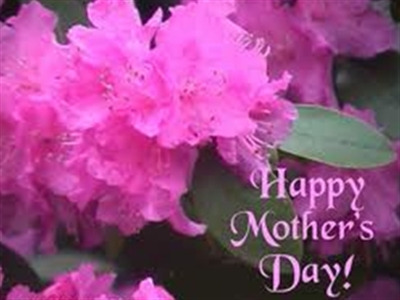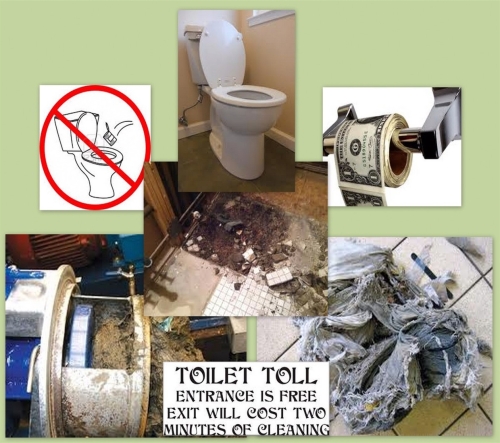
The following article, ‘The Toilet Toll’ is taken from the July/August issue of WaterCanada. Sewer systems—and taxpayers—are paying the price for what confused consumers deem “flushable.”
If you work in a wastewater treatment facility, you know better than to flush a toilet containing anything that isn’t water, human waste, or toilet paper. Unfortunately, that’s not the case for the general public. Every day, material such as baby wipes, feminine hygiene products, condoms, dental floss, cotton swabs, diapers, hair, bandages, candy wrappers, kitty litter, syringes, rubber and plastic gloves, cleaning wipes, pantyhose, and even toothbrushes are ending up in the sewer system.
This garbage leads to blocked private drain connections, clogged sewer mains, and damage to wastewater treatment facility equipment. Those blocked sewers can also lead to basement flooding and raw sewage discharges into our streams, creeks, and rivers.
Why are toilets being treated like trash cans? There are a couple of key reasons.
Confusing terminology. Over the past 30 years, the demand for and development of personal hygiene products has increased substantially. According to the Freedonia Group, for example, demand for disposable wipes in the United States is forecast to rise 5.1 per cent per year to $2.5 billion in 2016. Wipes for personal care, household cleaning, and industry cleaning can be made from paper, tissue, or non-woven material. Manufacturers classify some products as “flushable” without a clear definition. There are also “biodegradable,” “eco-friendly,” and “natural” wipes. No wonder people are confused.
Garbage collection limitations. Until recent years, household garbage collection did not have limitations or bag limits for collection. Changes to solid waste collection, however, have resulted in user-pay bag fees and more recycling and composting education. But the education has stopped at the curb. Paying for bag fees has encouraged some people to turn to their toilets as disposal units.
The costs of toilets as trash cans: The costs of clogging are enough to warrant the attention of every municipality across the nation. Clearing clogs could include flushing operations at the sewer main, emergency main blockage removal, damage to flooded residences and businesses, or raw sewage overflowing into creeks and rivers. At wastewater treatment facilities, workers may have to unplug equipment and remove unwanted, non-flushable material.
Turning these activities into duties can include preparing work orders, isolating equipment, cleaning equipment, and having maintenance personnel repair equipment, replace parts, and return the equipment to service—all of which take considerable time and resources.
According to the Canadian Gazette Part 2 Volume 146 Number 15, there are 3,700 wastewater treatment systems in Canada. A recent survey of some municipalities from across Ontario estimated that $80,000 is budgeted yearly for this type of operations and maintenance. Some municipalities have reported spending up to $5,000 per incident. That means, across the country, hundreds of millions of dollars are being spent fixing problems that, with a little education, could be avoided.
There are capital costs, too. Upgrading equipment like coarse screens comes at a much larger expense—usually hundreds of thousands of dollars. If municipalities think grinders are the solution, they should think again. A grinder is expensive to install and does not remove the garbage material. Instead, it creates smaller pieces of garbage that seem to collect in the most inconceivable locations. The result is unwanted surprises and removal challenges when the masses break free or grow.
Moving forward? At a recent Municipal Enforcement Sewer Use Group (MESUG) meeting, members agreed to send letters to federal, provincial, and municipal officials identifying their issues and asking for assistance with the spiralling costs. Letters also went to major manufactures that label some of their products “flushable.”
The Canadian Standards Association hosted a meeting in February 2013 with major manufacturer members of the Association of the Nonwoven Fabrics Industry (INDA), officials from MESUG, and the Canadian Water and Wastewater Association. This meeting identified issues that misleading labels are causing for wastewater systems, and MESUG argued a third-party, regulated standard should be created for Canada. Though many Canadian municipalities have spent time, money, and resources developing and delivering educational programs detailing what is and what is not flushable, INDA suggested the problem is related to a lack of public education and awareness.
It’s clear there is an enormous cost to using a toilet as a garbage can, but it’s even more evident that municipalities need to work together to serve the public and protect the environment. Manufacturers also need to provide the public with products that are safe for personal use and marked with proper disposal instructions.
Posted on July 15, 2013, written by Barry Orr. Barry is the sewer compliance officer for the City of London, Ontario.
For comments see:
http://watercanada.net/2013/the-toilet-toll/
 Rainsoft Reverse Osmosis Water Treatment System to ensure that all your water needs are met ~ refreshing pure tasting water for drinking or cooking, without the worry of unwanted chemicals and pharmaceuticals that are showing up in our municipal water systems. This also eliminates the added cost and environmental impact of plastic bottled water use.
Rainsoft Reverse Osmosis Water Treatment System to ensure that all your water needs are met ~ refreshing pure tasting water for drinking or cooking, without the worry of unwanted chemicals and pharmaceuticals that are showing up in our municipal water systems. This also eliminates the added cost and environmental impact of plastic bottled water use.
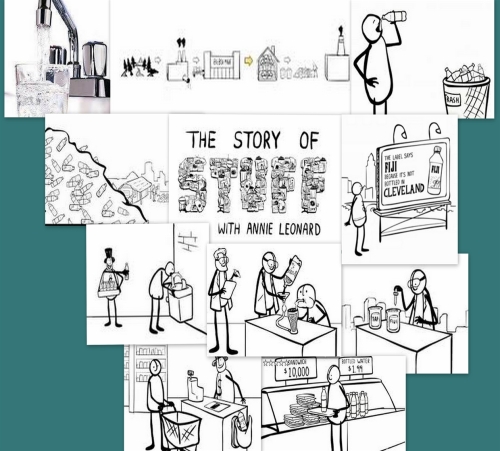
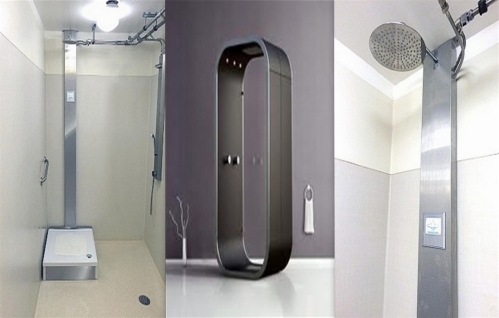
 In space, astronauts go for years without a fresh supply of water. Floating in a capsule in outer space they wash and drink from the same continuously recycled source. So why, asked Swedish industrial designer Mehrdad Mahdjoubi, do we not do the same on Earth?
In space, astronauts go for years without a fresh supply of water. Floating in a capsule in outer space they wash and drink from the same continuously recycled source. So why, asked Swedish industrial designer Mehrdad Mahdjoubi, do we not do the same on Earth?

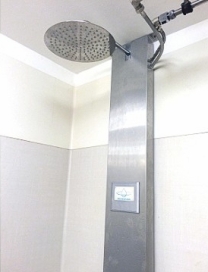 The concept of a water-saving shower is by no means a new one, but when
The concept of a water-saving shower is by no means a new one, but when 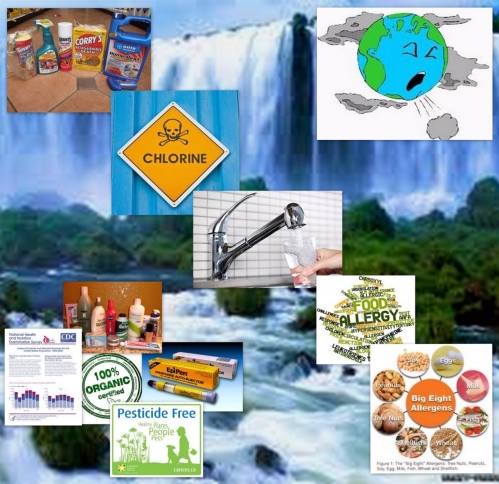
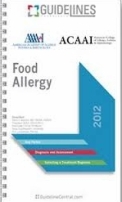
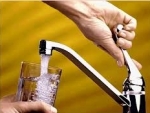

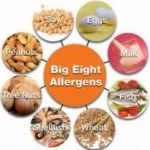

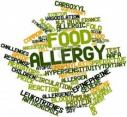 The researchers examined data on 10,348 people who had participated in a U.S. National Health and Nutrition Examination
The researchers examined data on 10,348 people who had participated in a U.S. National Health and Nutrition Examination 
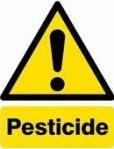
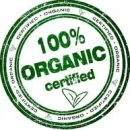
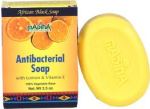
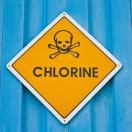




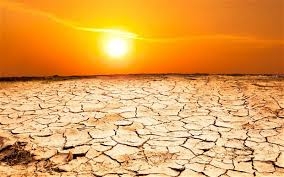








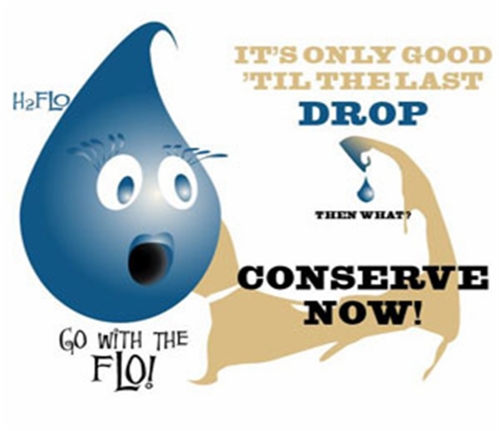
 More and more of my friends are flushing their toilets less and less. In fact, some of us are even flushing each other’s toilets less and less. That may sound like a ghastly breach of etiquette to the vast majority of
More and more of my friends are flushing their toilets less and less. In fact, some of us are even flushing each other’s toilets less and less. That may sound like a ghastly breach of etiquette to the vast majority of  Most of us have barely begun to size up our carbon footprint, and the concept of “peak oil” is just starting to seep into the MSM. But Jon Gertner’s chilling story on the
Most of us have barely begun to size up our carbon footprint, and the concept of “peak oil” is just starting to seep into the MSM. But Jon Gertner’s chilling story on the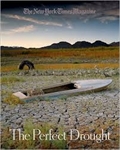 cover of Sunday’s
cover of Sunday’s 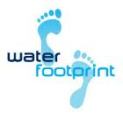
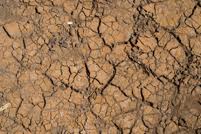
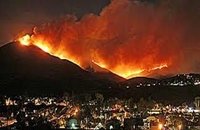 from San Diego to Santa Barbara
from San Diego to Santa Barbara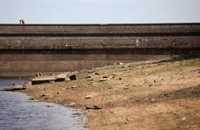 compounded by climate change has left reservoirs at an all-time low just when more and more people are relocating to the increasingly arid West. There’s not enough water to meet the growing demands of agriculture and development, and the situation is only going to get worse—much, much worse, according to the experts Gertner interviewed.
compounded by climate change has left reservoirs at an all-time low just when more and more people are relocating to the increasingly arid West. There’s not enough water to meet the growing demands of agriculture and development, and the situation is only going to get worse—much, much worse, according to the experts Gertner interviewed.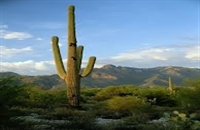 have a shrinking clean water supply. Those are on colliding paths…the people who move to the West today need to realize they’re moving into a desert…if they want to live in a desert, they have to adapt to a desert lifestyle.”
have a shrinking clean water supply. Those are on colliding paths…the people who move to the West today need to realize they’re moving into a desert…if they want to live in a desert, they have to adapt to a desert lifestyle.”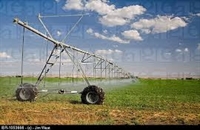 Those of us who hail from the irrigated deserts of California are familiar with the water-wise mantra “If it’s yellow, let it mellow; if it’s brown, flush it down,” or what Treehugger has dubbed “
Those of us who hail from the irrigated deserts of California are familiar with the water-wise mantra “If it’s yellow, let it mellow; if it’s brown, flush it down,” or what Treehugger has dubbed “ On this side of the Atlantic, the squandering of water is not only accepted, but expected.
On this side of the Atlantic, the squandering of water is not only accepted, but expected.  And then there’s the ubiquitous American lawn, utterly unsuited to much of the country’s climate, yet mandated by local ordinances… I was delighted by
And then there’s the ubiquitous American lawn, utterly unsuited to much of the country’s climate, yet mandated by local ordinances… I was delighted by  the other day devoted to a Boulder, Colorado CSA (community supported agriculture) run by a farmer, Kipp Nash, who works with suburban homeowners to convert useless lawns into productive vegetable patches.
the other day devoted to a Boulder, Colorado CSA (community supported agriculture) run by a farmer, Kipp Nash, who works with suburban homeowners to convert useless lawns into productive vegetable patches.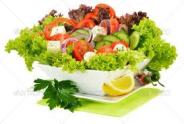 Lettuce in lieu of lawns? If our nation’s salad bowl turns into a dust bowl, we’re going to need a nation of Kipp Nashes to keep us in greens. The impending water crisis threatens the very foundation of our current agricultural system, which not only sucks up a huge percentage of the
Lettuce in lieu of lawns? If our nation’s salad bowl turns into a dust bowl, we’re going to need a nation of Kipp Nashes to keep us in greens. The impending water crisis threatens the very foundation of our current agricultural system, which not only sucks up a huge percentage of the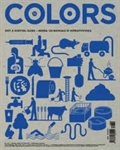 West’s water, but also spews copious amounts of chemicals back into our water supply, as Elizabeth Royte documents in her thorough–and thoroughly distressing–recent Grist feature,
West’s water, but also spews copious amounts of chemicals back into our water supply, as Elizabeth Royte documents in her thorough–and thoroughly distressing–recent Grist feature, 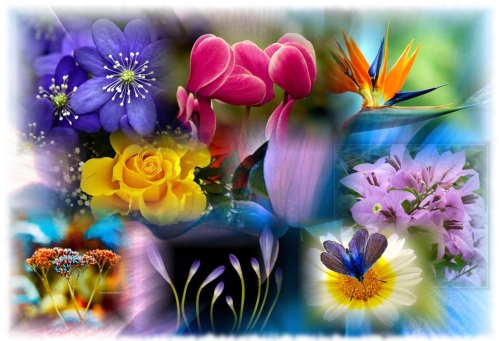


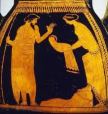
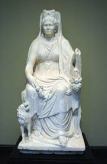

 The more recent history of Mothers Day dates back to
The more recent history of Mothers Day dates back to 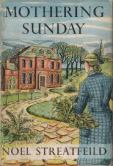 (the 40 day period leading up to Easter) to honor mothers… Custom of celebrating Mothering Sunday died out almost completely by the 19th century. However, the day came to be celebrated again after
(the 40 day period leading up to Easter) to honor mothers… Custom of celebrating Mothering Sunday died out almost completely by the 19th century. However, the day came to be celebrated again after  The idea of official celebration of
The idea of official celebration of 

